We're checking out the Proscenic M7 Pro to see if it can keep our floors clean while limiting the number of times we need to drag the vacuum out of the closet.
Robot vacuums have always promised to keep our homes cleaner while saving us time — but do they live up to the claims?
Today we're looking at the Proscenic M7 Pro, a robotic vacuum that even includes an optional mopping function.
Design
The M7 Pro robotic vacuum is relatively standard when it comes to its design. It's a classic, fully circular design that measures just under 14 inches across. Like other robots we've checked out, it has a raised laser sensor, which allows it to create a map of your home while it cleans.
This specific robot features two brush-arms that help kick dust toward the beater bar, located on the underside. They work better than some other robots we've tested and seem reasonably sturdy.
There are 24 sensors in the M7 Pro, most of which are used to keep the robot from crashing into walls or stairs. It includes a HEPA filter, which prevents allergens from escaping back into the room once collected.
The dustbin, located on the front of the robot, can be removed by pressing a tab. Emptying the robot is extremely easy and can be done in a couple of seconds. You'll have to wash the included filter once a week and give it 24 hours to fully dry to keep the robot running at peak performance.
Included in the box is an additional filter, optional water reservoir, and cleaning cloth, enabling the robots mopping mode — the water reservoir clips under the dustbin when in use.
Setup
Depending on how you're planning on using the robot, your setup will vary. For example, you don't need to connect the M7 Pro to your home network — you can use the included remote control or press the buttons on top of the robot. Both methods work fine, and for plenty of people, that may be all they need.
However, by connecting the M7 Pro to your home network, you can take advantage of many of the settings only available from within the app.
Yet, we found that connecting the M7 Pro to our home network wasn't as easy as we had hoped. Our first several attempts didn't work, despite following the instructions to the letter. We could connect the robot to our network, but the installation feature would time out halfway through.
Eventually, after a few days, we could connect it by doing the same steps as before. We aren't sure what changed, but the setup went smoothly after waiting several days before another attempt.
Sweeping
We were impressed with how well the M7 Pro did with sweeping. The apartment we tested it in has a mix of laminate and carpeted areas, with a recently replaced carpet. It effortlessly swept up dust, dirt, food preparation crumbs, and more from the laminate flooring.
The apartment we tested is only 700 square feet, and the robot was able to finish sweeping in about an hour and 10 minutes and had 40 percent battery left. The Proscenic M7 Pro is powered by a 5,200mAh battery that can clean for about two hours before the robot will need to recharge.
One of the best features of the M7 Pro is its ability to automatically detect carpet while sweeping. This means that the vacuum will increase suction over carpeting and decrease it over laminate, hardwood, and tile flooring.
As far as suction goes, the M7 Pro is notably more powerful than other vacuums we've tested. It offers up to 2,600Pa of suction power, a full 600 more than our current favorite Roborock S4. 2,600Pa is still significantly less than an upright vacuum — which often reach 18,000Pa — but great for maintenance cleaning.
The downside is that the Proscenic M7 Pro is also far louder than the others we've tested as well. Even in quiet mode, we found that it was loud enough to disrupt conversation.
When it came to the carpets, it removed hair, fuzz, lint, and crumbs exceptionally well. Because the carpet we tested is newer, it's still shedding its preliminary factory-fuzz, which meant we had to take the robot's filters out and clean them more than usual. Still, the three minutes of effort three times a week is a small price to pay for not needing to vacuum every other day.
Of course, how well a robotic vacuum works is highly dependent on where you're using it. Robotic vacuums work wonderfully for low-pile carpets, laminate floors, and hardwood floors. They can still help to keep shag carpeting and tile floors clean as well, but we don't think they'd completely replace an upright vacuum cleaner.
Additionally, if you have kids that track dirt in or pets that shed, you're going to spend more time maintaining the vacuum than you would otherwise.
There are also a few cases where a robotic vacuum isn't the best tool for a job. If you have excessive amounts of pet hair — say if you own a bunch of pomeranians or ragdoll cats — it will likely just clog the vacuum and render it useless.
If you've got family members or roommates who have a habit of leaving things on the floor, a robotic vacuum may be more hassle than it's worth. They are quick to suck up loose change, headphones, stray cords, and more.
This isn't a big deal if you're home and you can immediately stop what you're doing and dislodge the items, but if it runs while you're out of the house, you may not find out what damage it has caused until several hours — or even days — later.
This isn't just true for the M7 Pro, but for all robotic vacuums — you'll need to decide if one can slot into your life or not.
Mopping
We were significantly less impressed by the M7 Pro's ability to mop, though we've used enough robotic mops to know we should somewhat temper our expectations.
The first thing we took note of was the size of the water reservoir. It is tiny and doesn't seem to dispense water into the cleaning cloth very much during the mopping cycle. That being said, it doesn't leave your floors a sopping wet mess, either, making it ideal for hardwood floors.
We've said it before— to adequately clean a floor, you'll need to be able to utilize at least two of the following: friction, cleaner, and heat.
Like most robot mops, you can't fill the reservoir with cleaning solution, it doesn't have a heat function, and it's too lightweight to scrub anything significant off the floor.
However, it does work wonders at shining up floors that are only somewhat dirty. It works well to maintain already clean floors — which means it's not the best solution for a house with kids, pets, or especially high-trafficked areas.
For us, though, we found that it did keep the floors looking nice and extended the amount of time between actual mopping sessions.
We do have a word of caution for those who are looking into getting a robotic mop. Although it seemingly can identify carpet in the sweeping mode, it doesn't seem to detect it in mopping mode.
This means you'll need to make sure you use the app to ensure it doesn't diligently mop your carpeted rooms.
The app
The ProsenicHome app is, essentially, the same as most other robotic vacuum apps we've seen. Like other vacuums, there are two primary uses for the app.
The first is to set up an automatic cleaning schedule for the robot to perform. For many people, the ability to have a robotic vacuum cleaner sweep while they're asleep or out of the house is a significant benefit.
The second is to keep an eye on your vacuum. It can often be a little hard to deduce what may cause a robot vacuum to stop working. An app provides helpful insight and can alert you to blocked filters, suspended wheels, bound-up beater bars, and more.
Of course, the app has other features, too. It can let you see the cleaning path your robot has most recently taken, allow you to set up no-go zones, or send the vacuum to clean up a specific area.
Generally speaking, the app experience — after the initial setup — was sufficient. It's easy to use and offers all the features we'd expect to use.
Additional dust collector
While we didn't get to test it, the Proscenic M7 does have an optional automatic dust collector. The dust collector will automatically empty your robot after it finishes sweeping and bundles the debris into disposable vacuum bags. It doesn't eliminate maintenance — you'll still need to clean the filter at least once every ten days or so, but it cuts down a lot of the maintenance.
The dust collector costs $100, which may be worth the investment if you don't want to empty the robot every other time you vacuum or if you're a person who suffers from a lot of allergies.
Overall
As far as robotic vacuums go, the Proscenic M7 Pro is pretty decent. It outperformed several other vacuums we've tested when it comes to sweeping but had a fairly mediocre go when it came to mopping. It can be fairly loud, too, which may limit the times you can use it.
Should you want to purchase your own Proscenic M7 Pro, you can head over to Amazon, where it retails for $399.
Rating: 3.5 out of 5
Pros
- Strong suction makes quick work of light to medium messes
- App allows users to set up convenient cleaning schedules
- Robot is easy to empty, filters are easy to wash
Cons
- Small mopping reservoir does not provide enough water to clean the floor
- Can be excessively loud, even on quieter modes
- Setup can be frustrating, even for experienced users
 Amber Neely
Amber Neely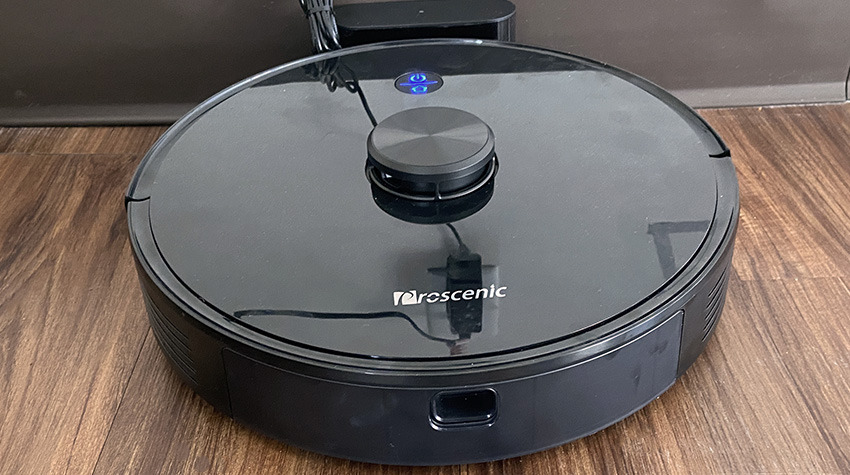
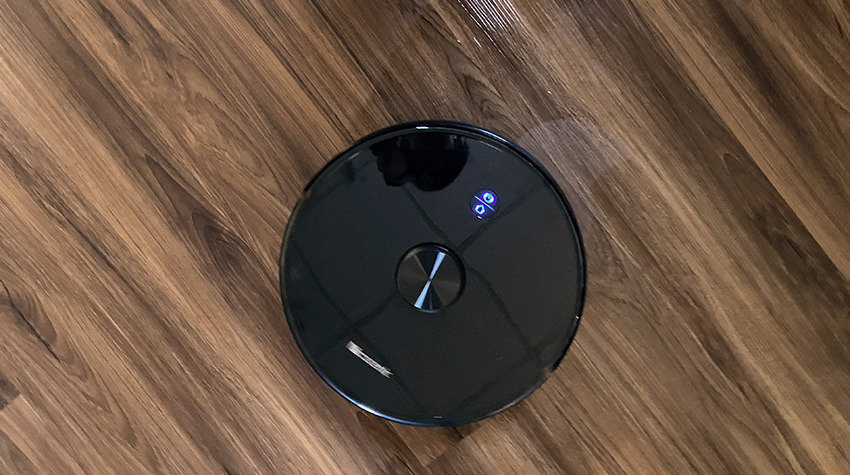
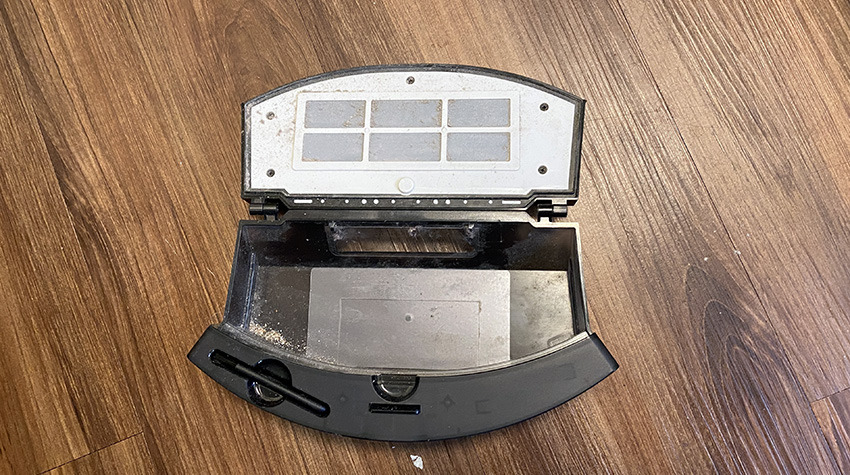
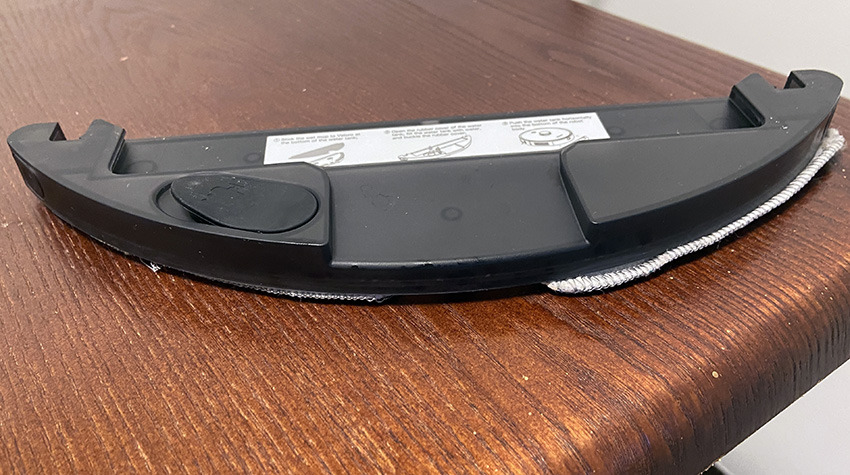
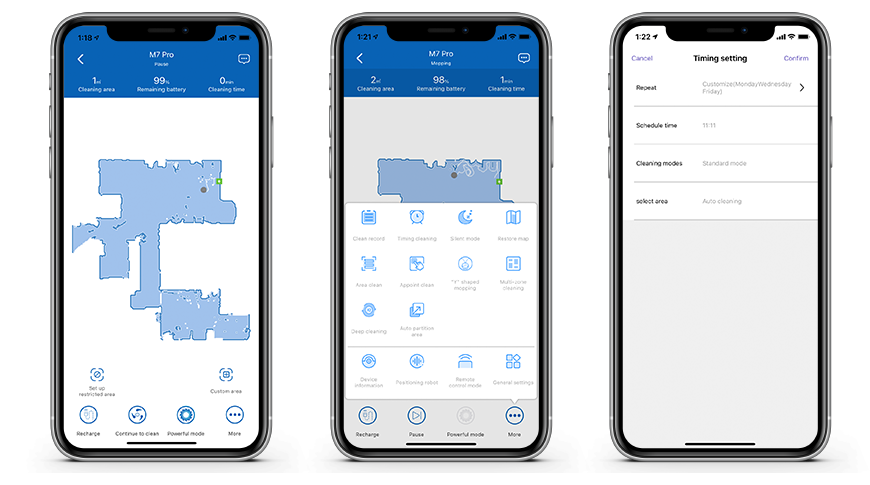







-m.jpg)





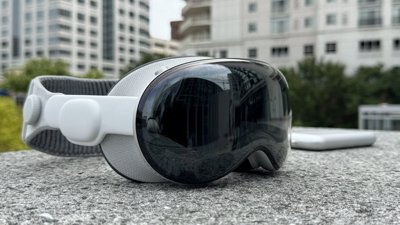
 William Gallagher
William Gallagher
 Malcolm Owen
Malcolm Owen


 Chip Loder
Chip Loder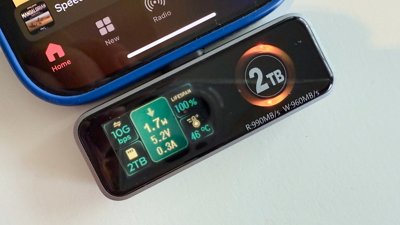
 Mike Wuerthele
Mike Wuerthele



-m.jpg)






7 Comments
All robot vacuums are terrible at getting into tight spots and miss obvious details anyone operating a full-scale vacuum would simply roll over. Just like autonomous vehicles, the next hurdle for these companies is to get autonomous vacuum cleaning robots that use machine learning to identify real problem spots to get them and objects like clothing or cords to avoid them.
Wait, you normally vacuum “every other day”?
Vacuum reviews on AI? Apart from there being an iOS app for it, I'm not sure why there is a vacuum review on an Apple-centric site?
What's next -- best ridesharing services or best bank?